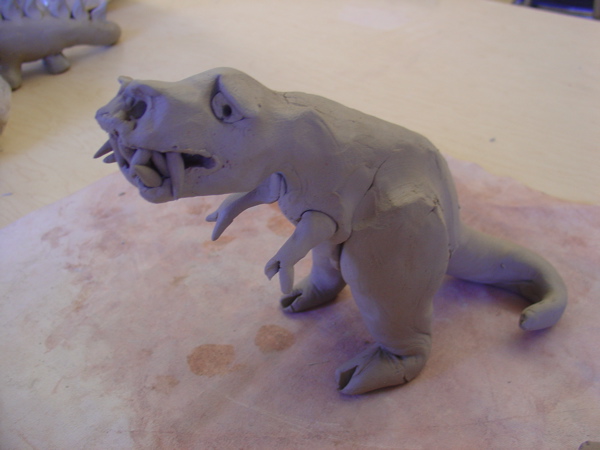Lesson 3 Making Figures
I find all children wish to make human figures and, as we humans are bipedal, we are tough to make!
This is a great opportunity to further the idea of making as much as possible out of one piece of clay and then to add skills in molding small features as well as having a discussion about proportion and correct location of limbs, etc. Everyone can look at their neighbour for reference.
Start by showing them that the shoulders are generally the widest part of the body. They should make a rather thick, very slightly flattened carrot shape. (We will add the head later).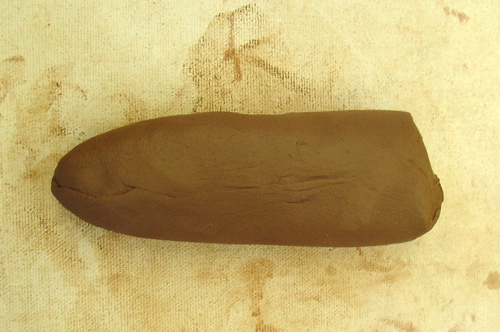
Draw first, then cut a slit about halfway up the narrow end to delineate the legs.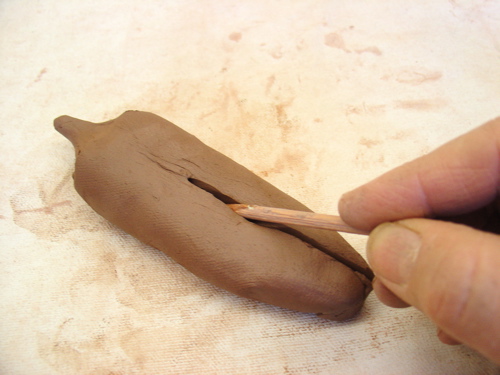
The feet will be the bottoms of these bent up.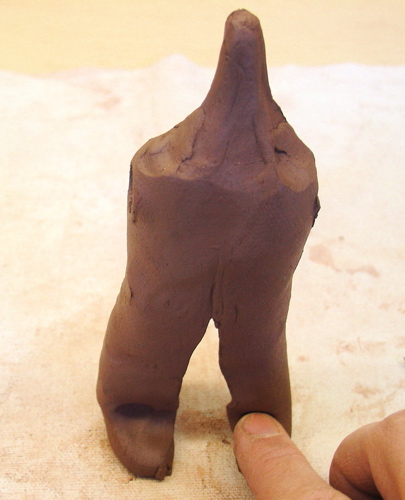
You have the option of doing the same on the sides of the carrot for arms but if you want to pose the arms I find it helpful to put holes into the shoulders and add the arms as coils.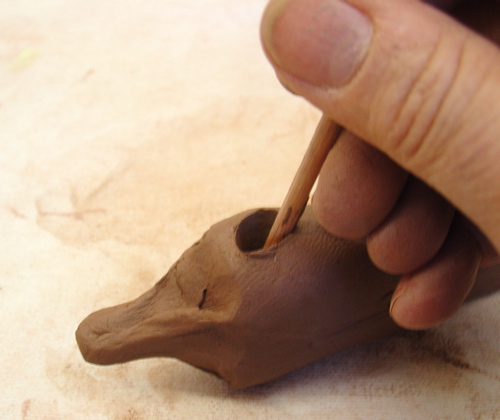
I usually only cut a small notch to make a thumb. Fingers are much too small and complicated for a simple figure.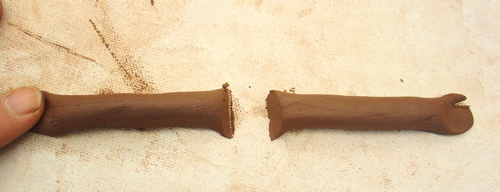
Then comes the tricky part, pinching out “neck post” – the head will be affixed to this.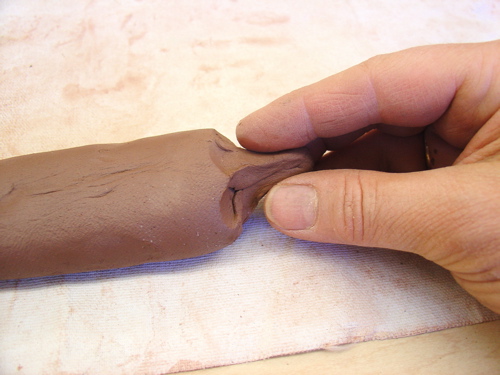 After I have the arms and neck post, I ask the kids what’s missing?
After I have the arms and neck post, I ask the kids what’s missing?
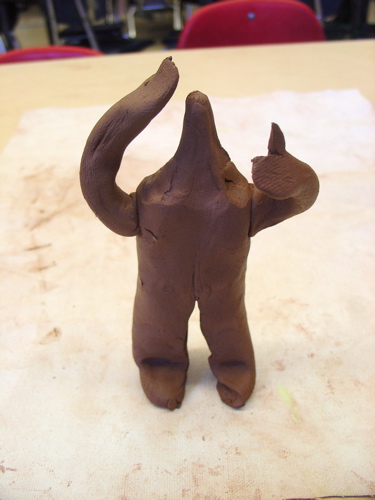
To make the head, roll a ball (remember, proportion!) I usually have the kids choose the right size. It really helps them have a better idea of the size their head should be. They tend to make them too large as the head is so important and then it is too heavy and the neck can’t support it.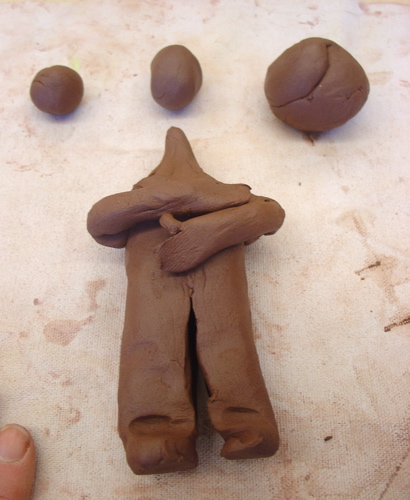
and make it a bit elongated – oval- and make a hole in the base that will fit over the neck post. Before affixing it, make the features. (We had some of this when we made T-Rex’s face.) To make eye sockets and the nose all at once pinch the ball, squeezing up a nose-sized amount of clay,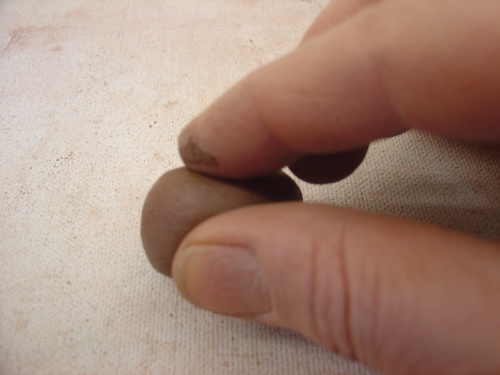
If it’s too long, you can always cut some off or push it back into the head.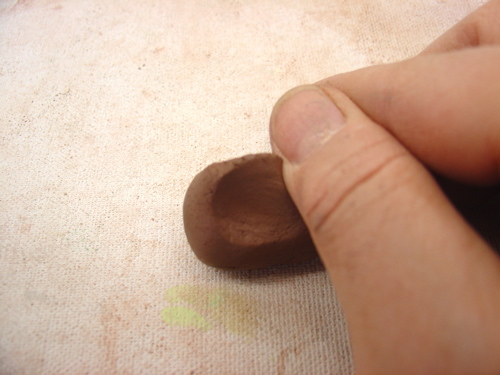
the mouth can simply be drawn or pressed in-we can talk about how our person is feeling and make a corresponding expression. Don’t forget ears and eyeballs. hair can be added or simply drawn on as a texture.
At this point I still recommend most have the pancake base unless the student wants more of a doll than a statue
What should your figure be doing? Sitting? Running? Holding something? These are all options.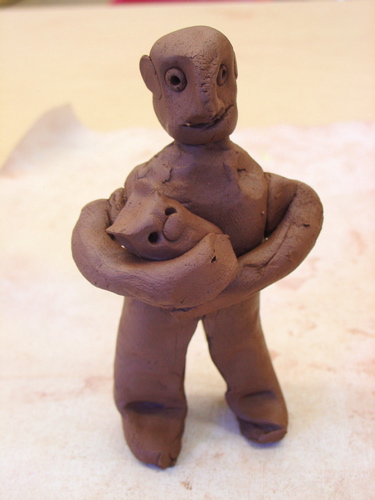
The most common mistakes students make are:
Eyes at the top of the head- instead of 1/3 down.
Arms coming out of the side of the body instead of the shoulders.
Another mistake students often make is to try to work on their person while it standing- or rather, while they are attempting to keep it standing upright. Explain that when you have an operation, you are lying down. We can stand them up or sit them up when they are finished.
For one class I neglected to point out that our shoulders are the widest part of us and the result was quite a few students cut the slit for the legs at the wide end of the carrot and then we got the long spindly neck too.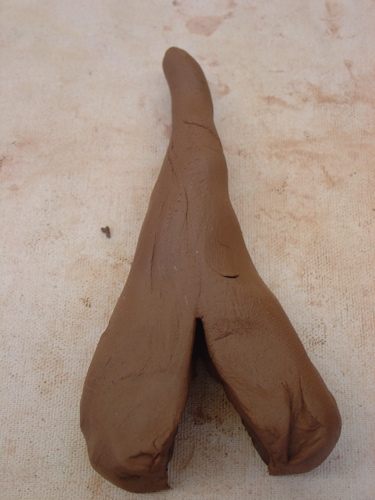
Also, just as when they are trying to roll the “yam” shape, they roll the middle and the the body thins out and becomes too weak.
My big favourite, a HOLE for a nose. I call this guy “bowling ball Bob” as he has 3 holes in his head like a bowling ball.
And then some students inevitably make their person quite flat (2-D) I call that guy “Steam roller Bob” and usually hold him up to show how floppy he is and talk about his sad accident with a steam roller.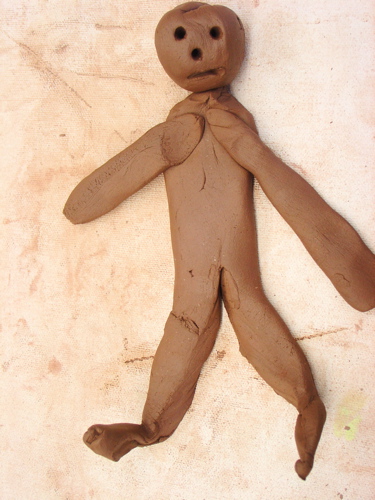
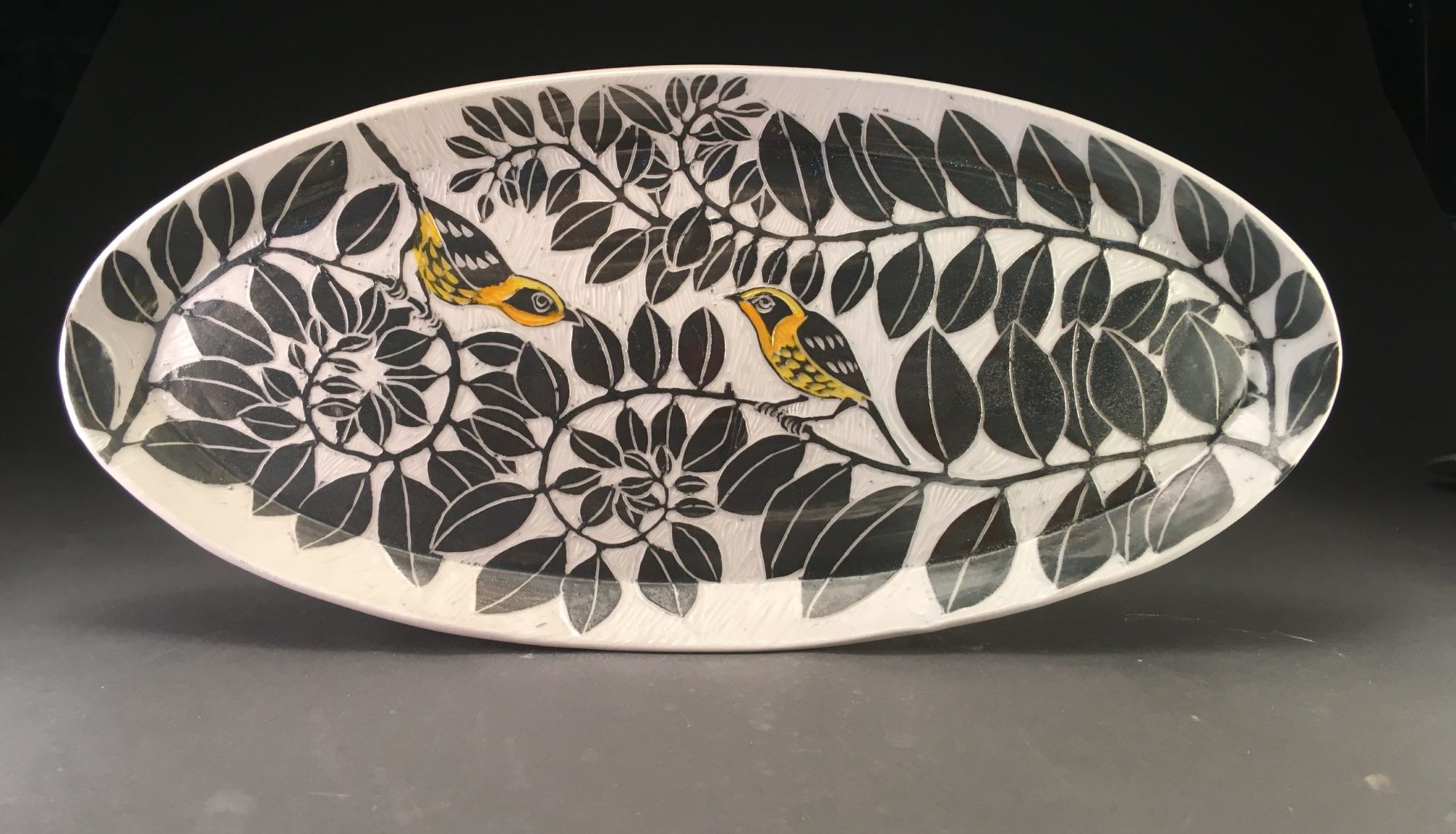
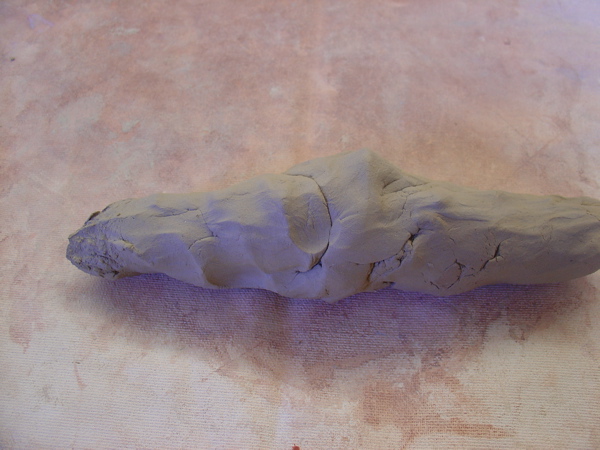 then roll it smooth
then roll it smooth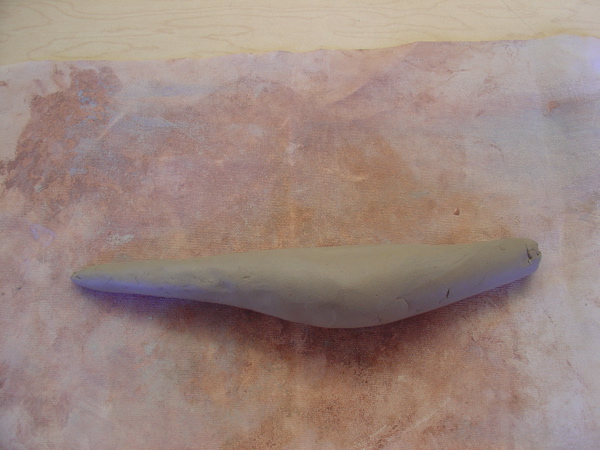
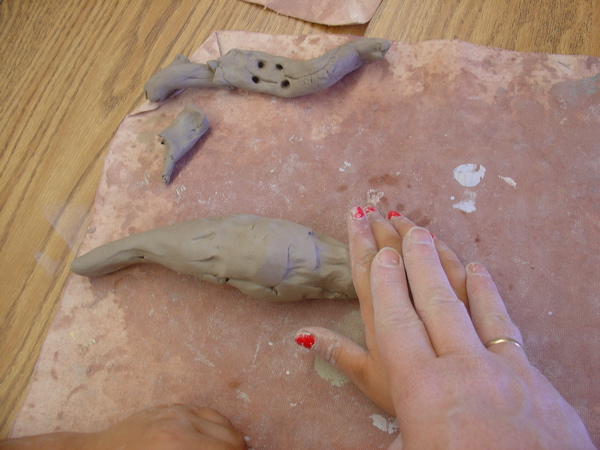
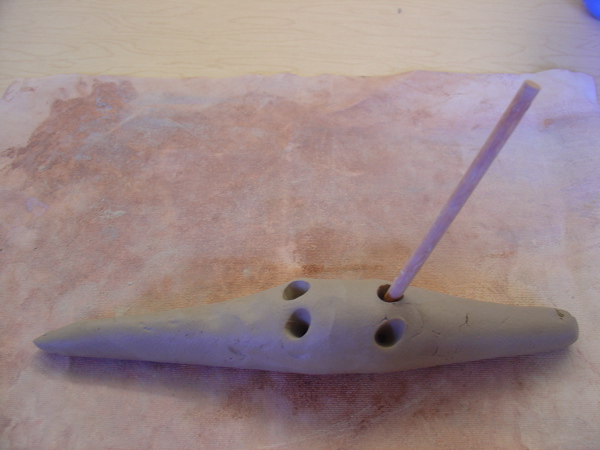
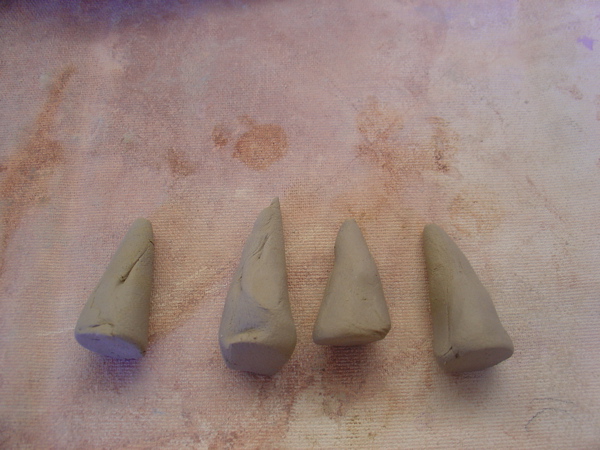
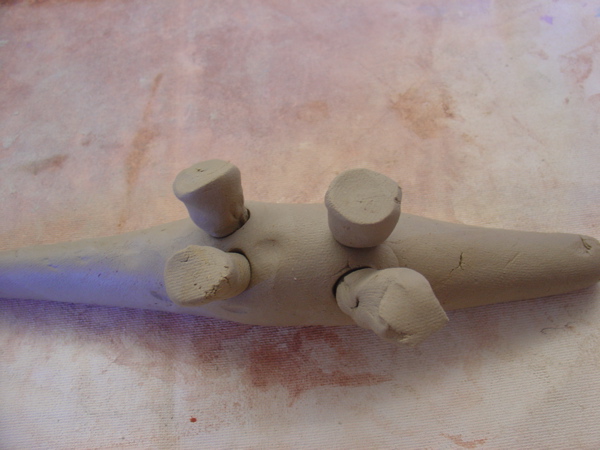
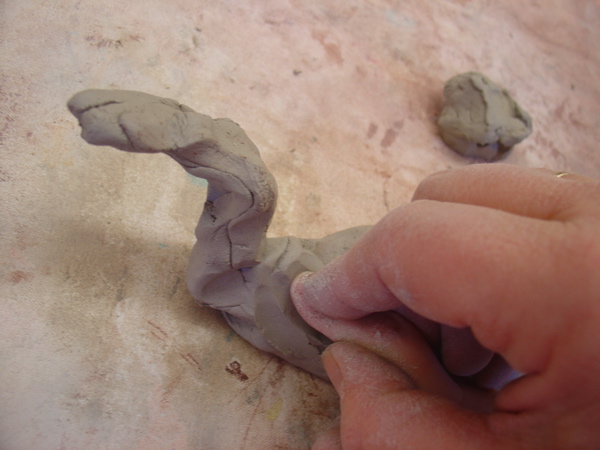
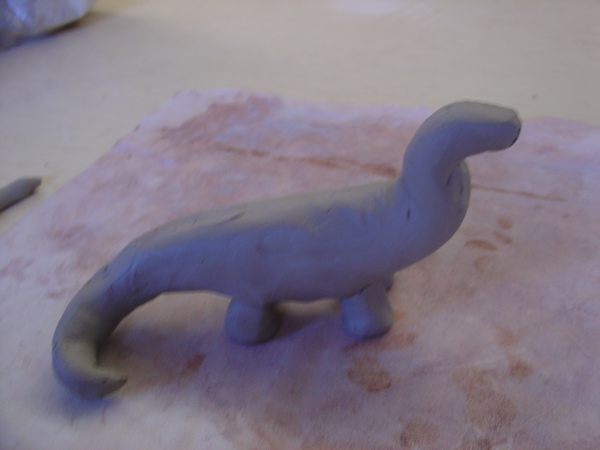 NOTE: I highly recommend curving the tail and especially back toward the body. This will make it stronger. Any time you curve the clay, it is stronger.
NOTE: I highly recommend curving the tail and especially back toward the body. This will make it stronger. Any time you curve the clay, it is stronger.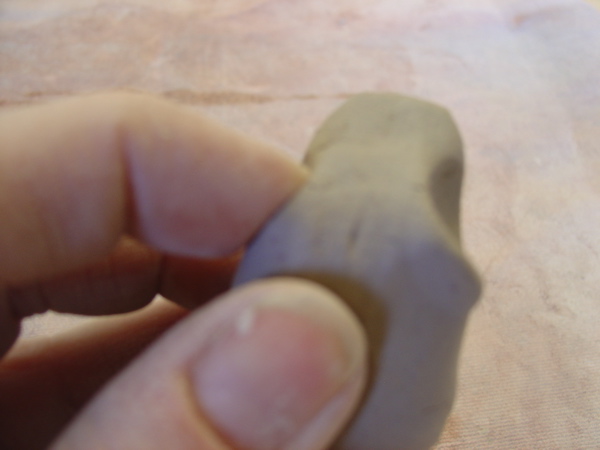 (sorry, a bit out of focus)
(sorry, a bit out of focus)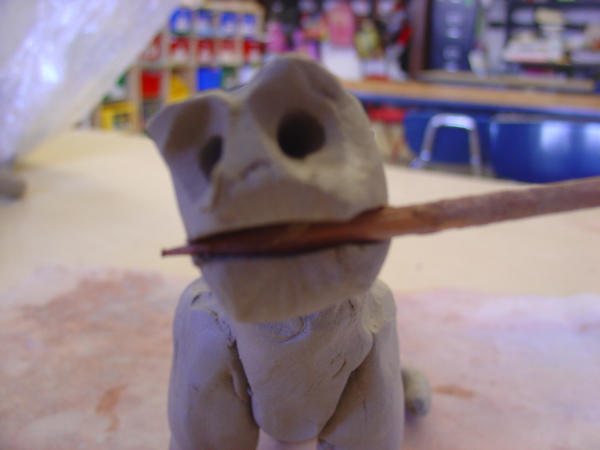
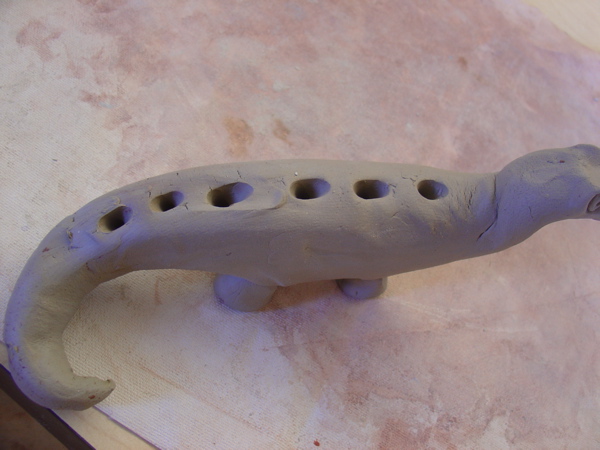 a spike should look like this:
a spike should look like this: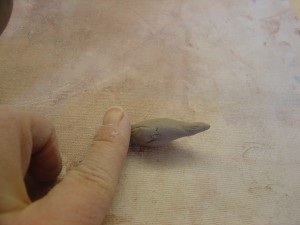
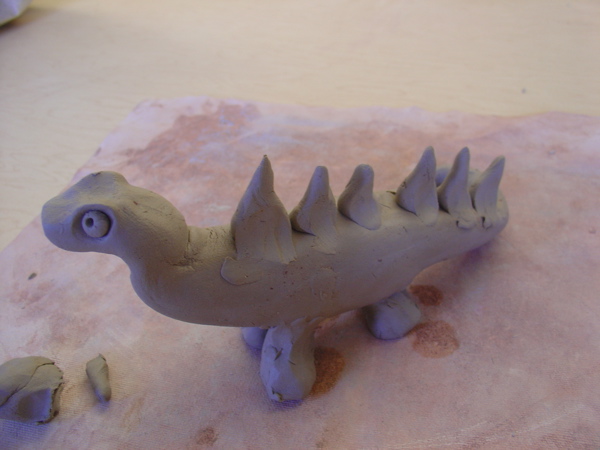
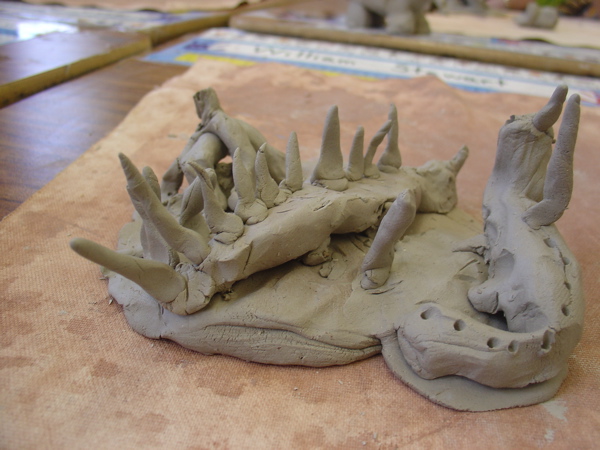
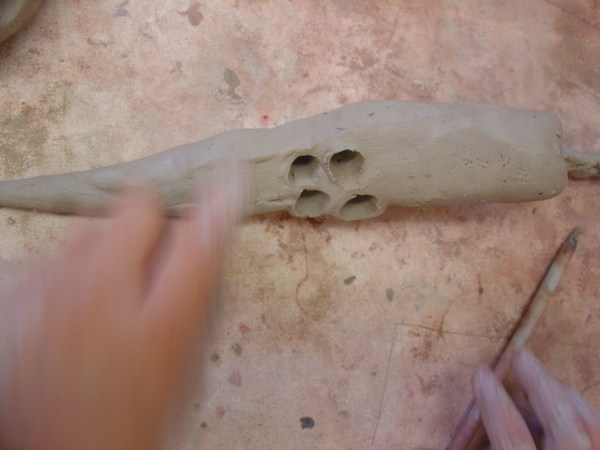
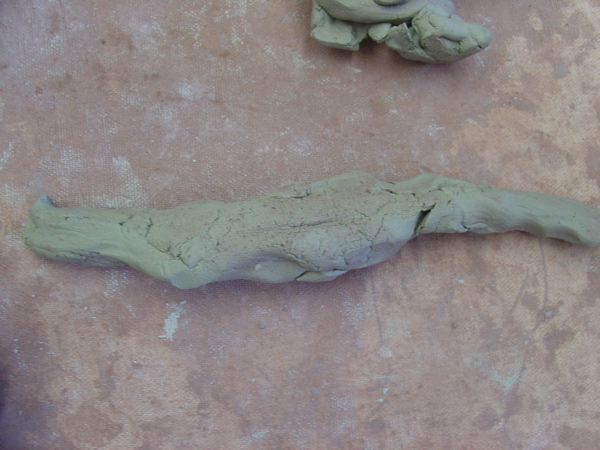
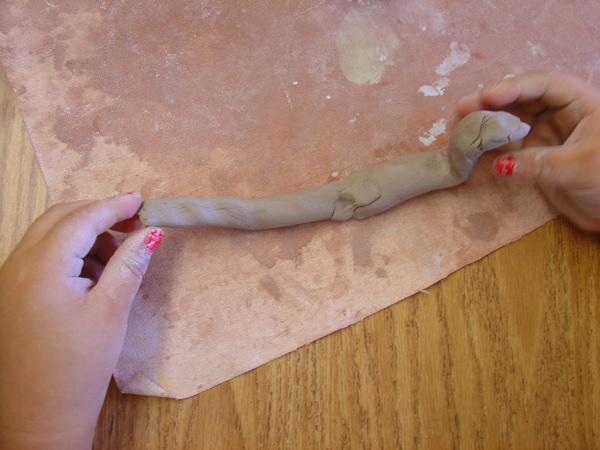
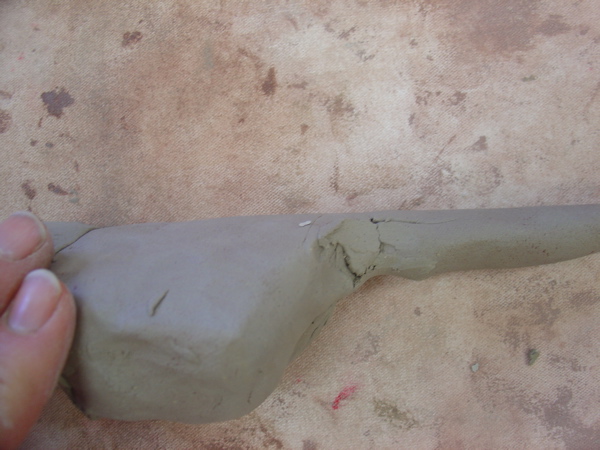
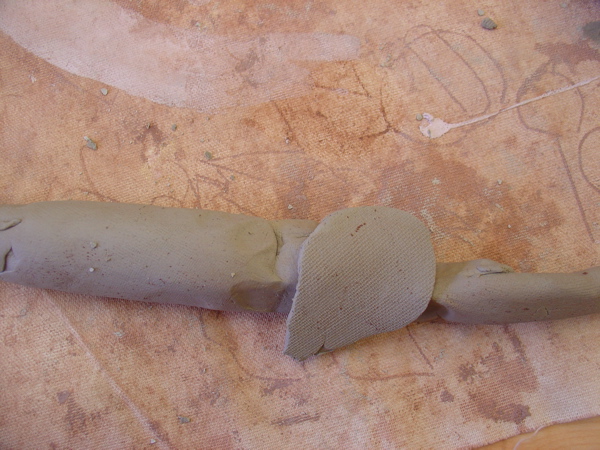
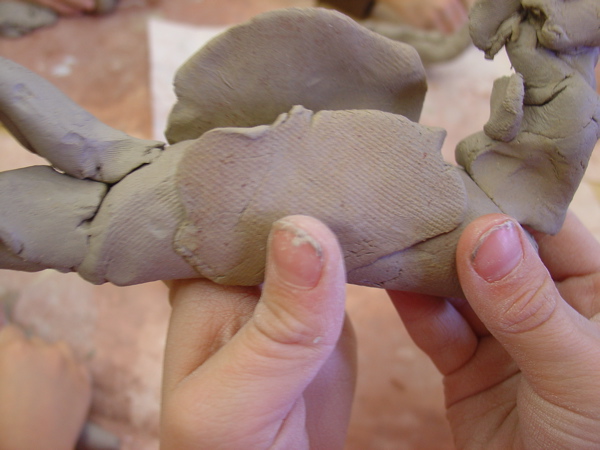
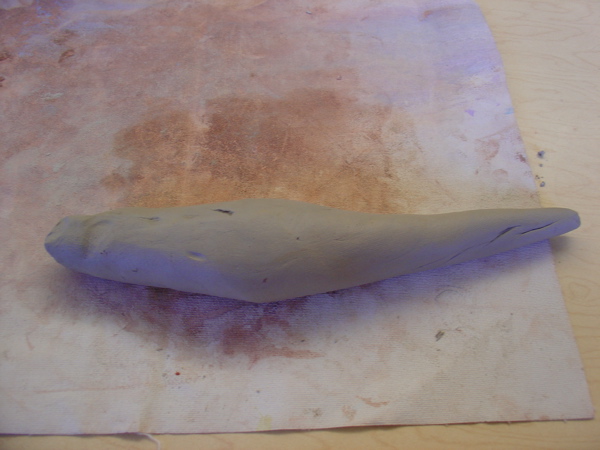 You must “choke” him a little to define his head.
You must “choke” him a little to define his head.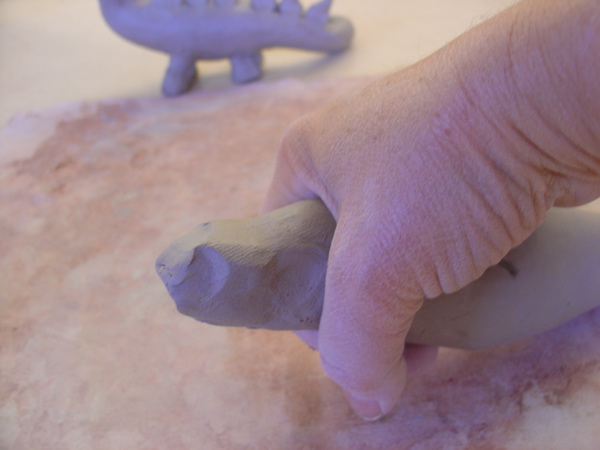

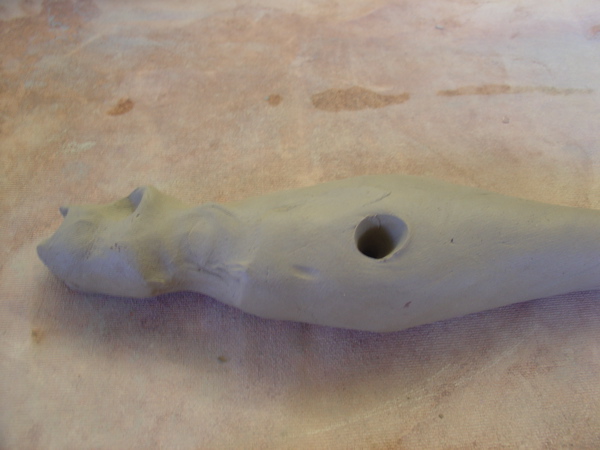
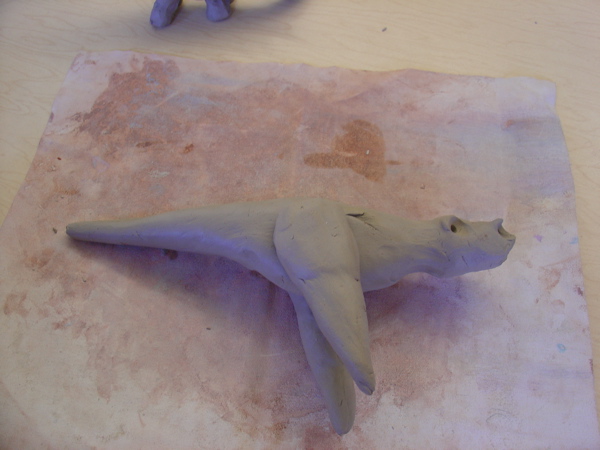
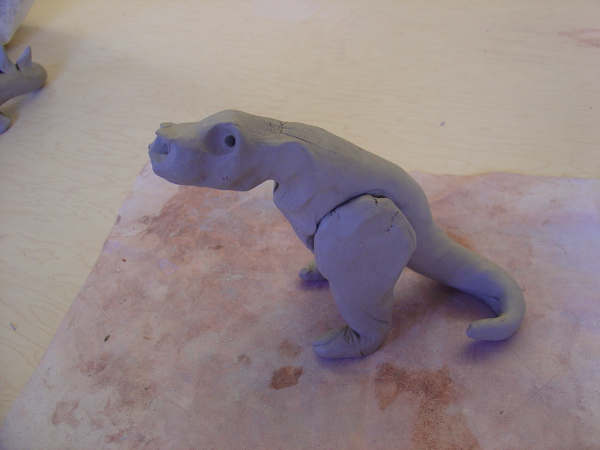
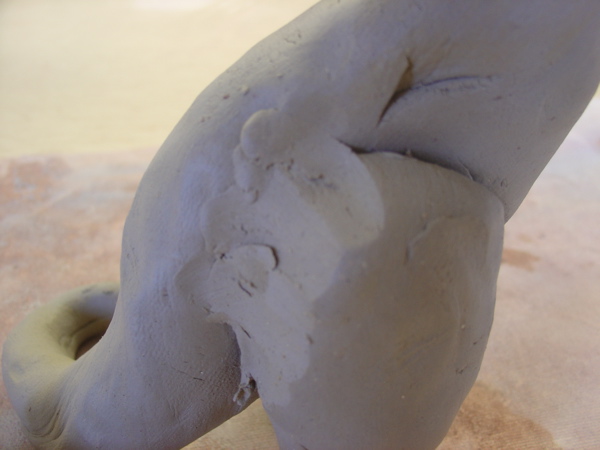 For the feet, cut a notch in the pointy end- this gives you your two toes. Don’t make them too delicate.
For the feet, cut a notch in the pointy end- this gives you your two toes. Don’t make them too delicate. 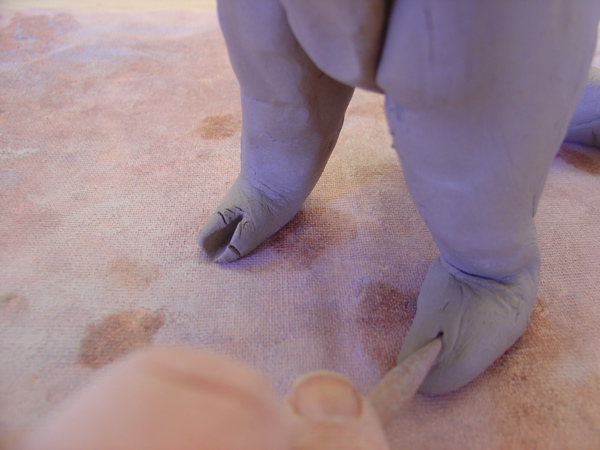 Now you may make the face, make nostrils and eye sockets as described above and put little balls in and poke a hole in the center. To make him look angry, you can push the brow down a little, this also holds the ball in better.
Now you may make the face, make nostrils and eye sockets as described above and put little balls in and poke a hole in the center. To make him look angry, you can push the brow down a little, this also holds the ball in better.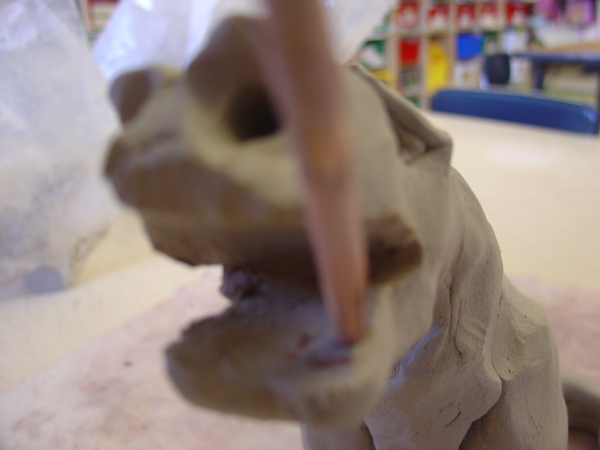
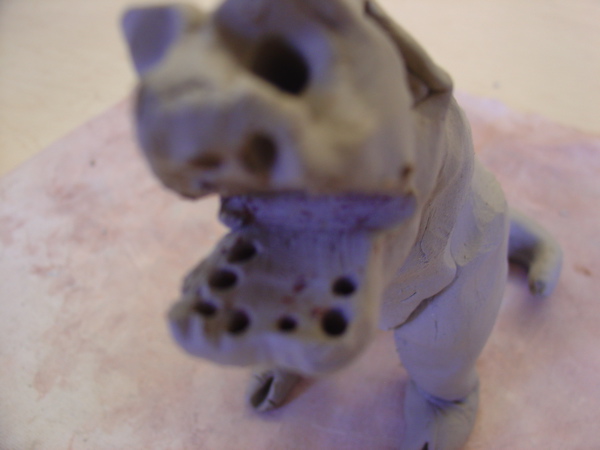
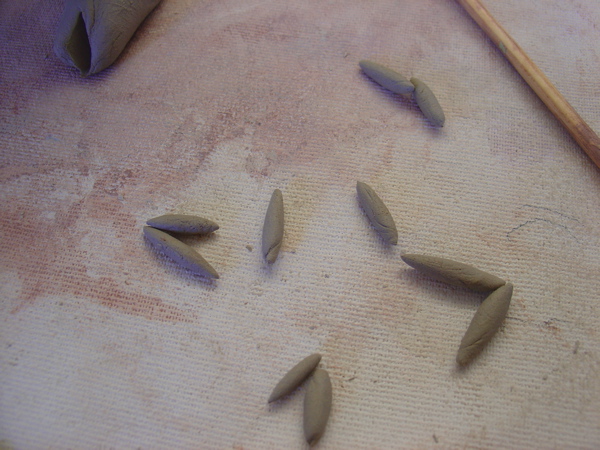 and insert tiny tiny pointy coils for teeth
and insert tiny tiny pointy coils for teeth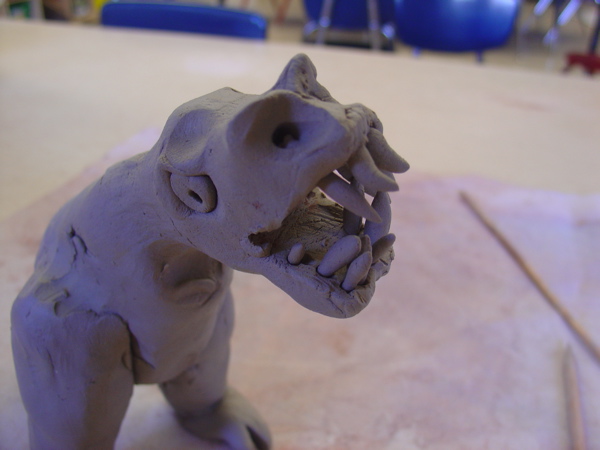 and then closed to interlock the teeth- again, this makes them stronger. The teeth will poke out every which way giving him a snaggle toothed look. The students love this!
and then closed to interlock the teeth- again, this makes them stronger. The teeth will poke out every which way giving him a snaggle toothed look. The students love this!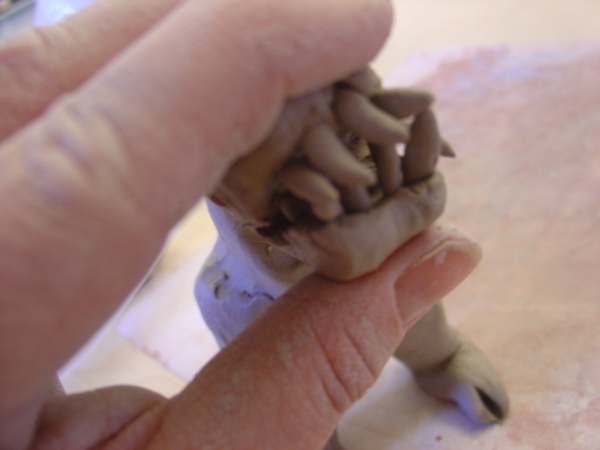
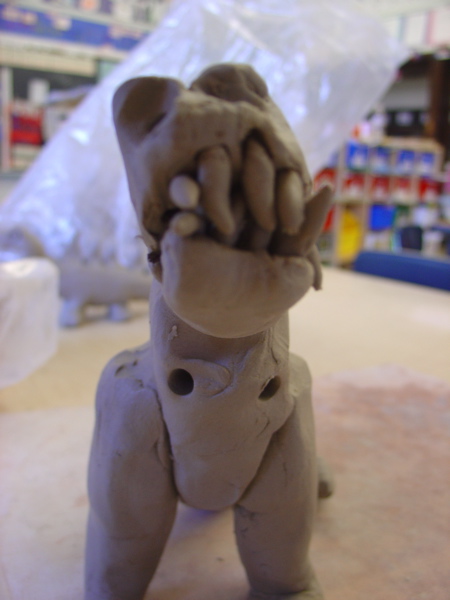 make two thin snakes, cut the notches again for the toes and insert them for the T-Rex’s tiny front legs.
make two thin snakes, cut the notches again for the toes and insert them for the T-Rex’s tiny front legs.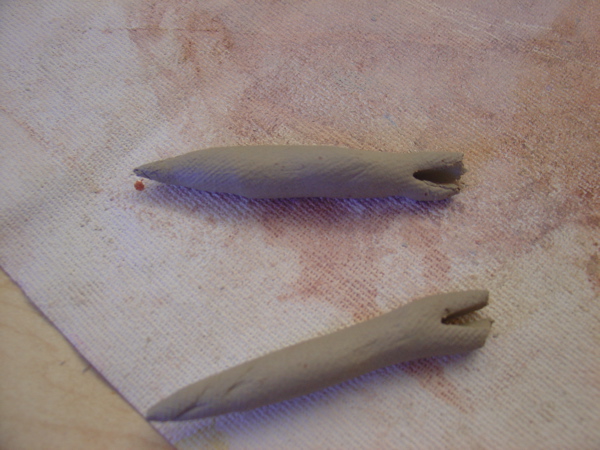 and voila!
and voila! 